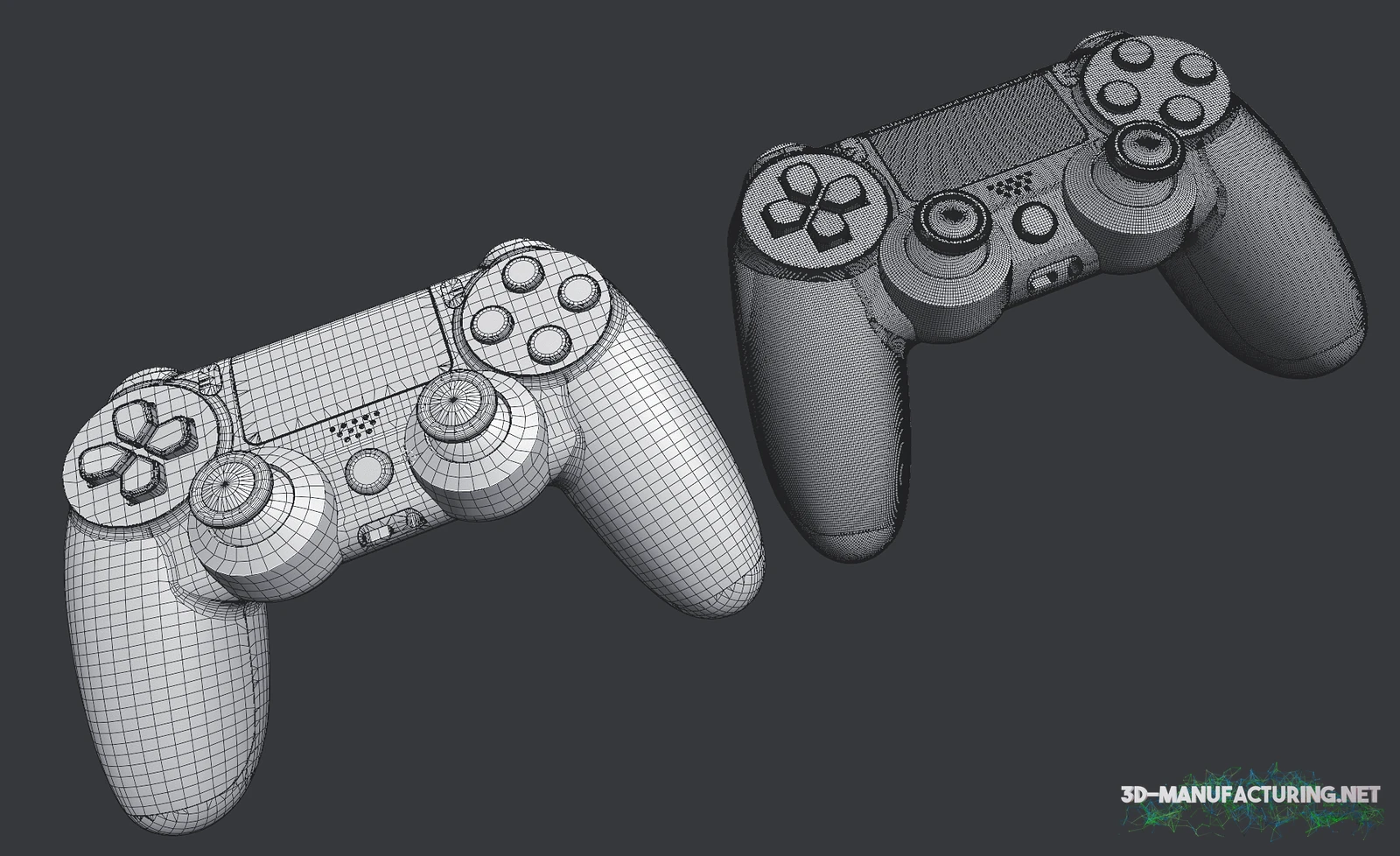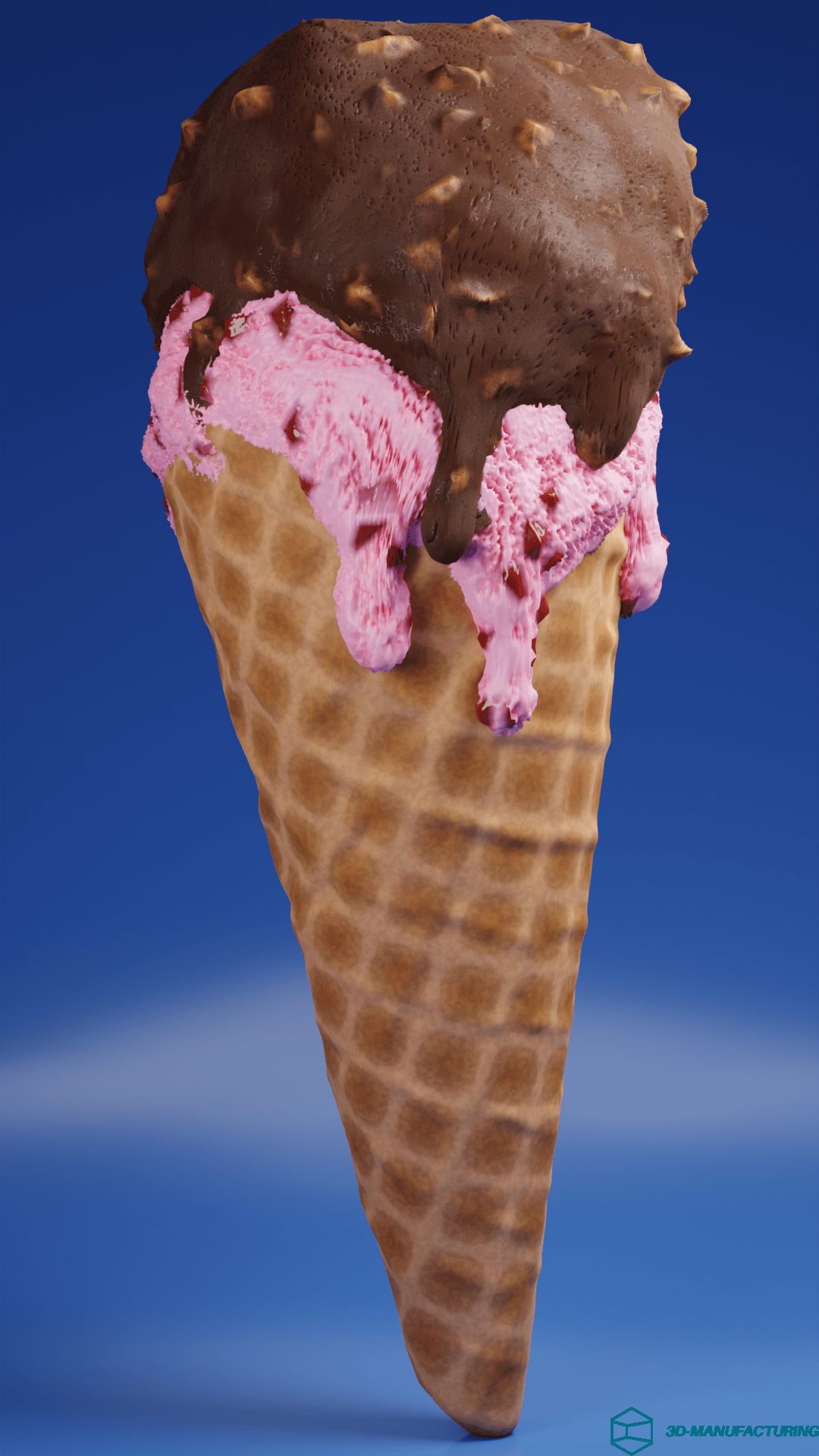Polygonization of CAD NURBS Data: A Detailed Examination of the Process
Nurbs, BREP Surface, Original CAD Model as STEP or IGES Format.
The process of converting CAD NURBS data into a polygon model is referred to as “Tessellation.” Tessellation is the conversion of smooth, curved surfaces defined by NURBS (Non-Uniform Rational B-Splines) into discrete polygons consisting of triangles or quadrilaterals. This process is also known as “Polygon Mesh Generation” or “Polygonization.”
Polygon models are needed in various applications and industries. Here are some examples of when these models are required:
- Visualization and Animation: Polygon models are used in the entertainment industry, particularly in film and game development, to create, animate, and render 3D objects.
- Virtual Reality (VR) and Augmented Reality (AR): Polygon models serve as the foundation for immersive VR and AR experiences, where they appear as virtual objects in the real or virtual environment.
- Industrial Design: Polygon models are used to create prototypes and 3D models of products before they go into production. This enables accurate visualization and review of designs.
- Architecture and Construction: Polygon models are employed in creating architectural visualizations, virtual walkthroughs, and construction plans to represent buildings and structures in three dimensions.
- 3D Printing: Polygon models are used in the 3D printing industry to create physical objects. The models are typically converted into a specific format that can be processed by 3D printers.
- Medicine and Anatomy: Polygon models are used in medical imaging and simulation to represent and analyze anatomical structures, organs, or tissues.
- These are just a few examples of when polygon models are needed. The use of polygon models is extensive and finds applications in many fields where 3D representations and visualizations are required.
From CAD to Polygon Model: The Process of NURBS to Polygon Conversion
Exploring the Process of 3D Reconstruction and Tessellation
In the world of 3D modeling and visualization, two important processes come into play: 3D reconstruction and tessellation. Both processes involve transforming data into three-dimensional representations. In this article, we will delve into the similarities, differences, and significance of these processes.
Understanding 3D Reconstruction:
3D reconstruction is the process of generating a three-dimensional model or representation from existing data. It involves techniques such as camera calibration, image processing, and algorithms to reconstruct the spatial geometry. By analyzing point clouds derived from sensor data or images, 3D reconstruction creates detailed models of objects, scenes, or environments.
Tessellation: Transforming CAD-NURBS Data into Polygon Models:
Tessellation, on the other hand, focuses on the conversion of CAD-NURBS data into polygon models. It is the process of converting smooth, curved surfaces defined by Non-Uniform Rational B-Splines (NURBS) into discrete polygons, usually consisting of triangles or quadrilaterals. This step, also known as “Polygon Mesh Generation” or “Polygonization,” allows for efficient representation and visualization of 3D objects.
Similarities and Connections:
While 3D reconstruction and tessellation have distinct goals, there are notable similarities between them. Both processes involve data processing, analysis, and the generation of 3D representations. Additionally, they rely on point clouds or point data to capture the shape and geometry of objects. Tessellation can be seen as a specific aspect of the broader 3D reconstruction process, focusing on the conversion of NURBS data into polygonal representations.
Significance in Various Fields:
The significance of 3D reconstruction and tessellation spans across numerous industries and applications. In fields like entertainment, film, and game development, these processes enable the creation of realistic 3D objects and immersive virtual experiences. Industries such as architecture, industrial design, and medicine benefit from accurate representations of objects, prototypes, and anatomical structures. Furthermore, the use of polygon models and tessellation plays a crucial role in 3D printing, where physical objects are created based on the converted data.
Conclusion:
3D reconstruction and tessellation are essential processes in the world of 3D modeling and visualization. While 3D reconstruction focuses on the generation of three-dimensional representations from existing data, tessellation specifically deals with converting NURBS data into polygon models. Understanding these processes and their significance in various industries allows for enhanced visualization, design, and analysis in the three-dimensional realm.
Another Example with a clean Quad-Mesh. CAD-Model by 3D-Manufacturing. Realtime Render enabled with Blender/Eevee







